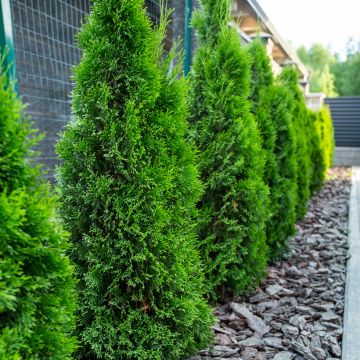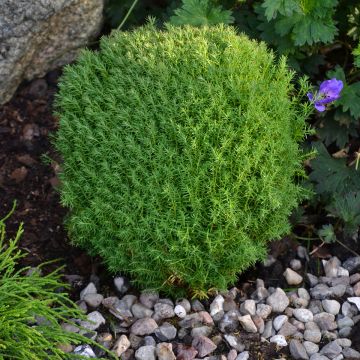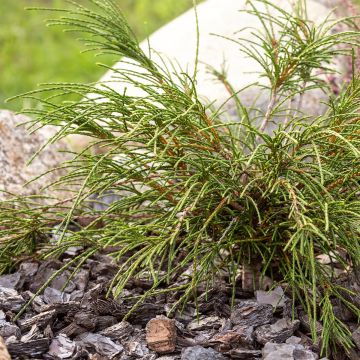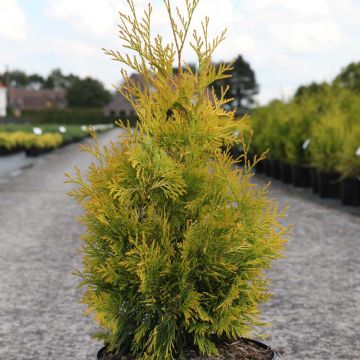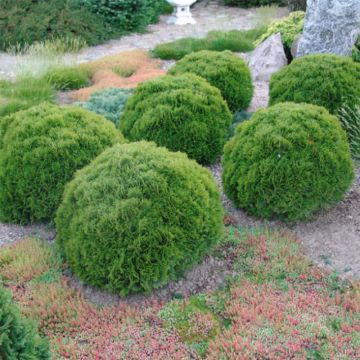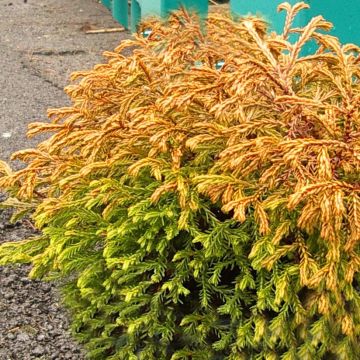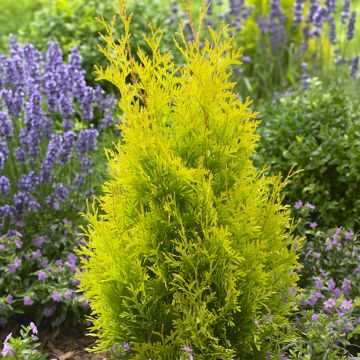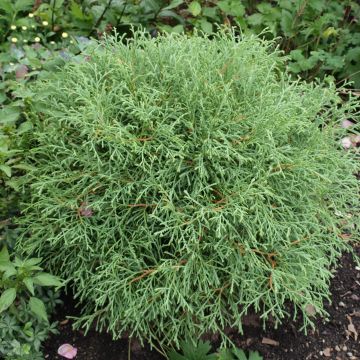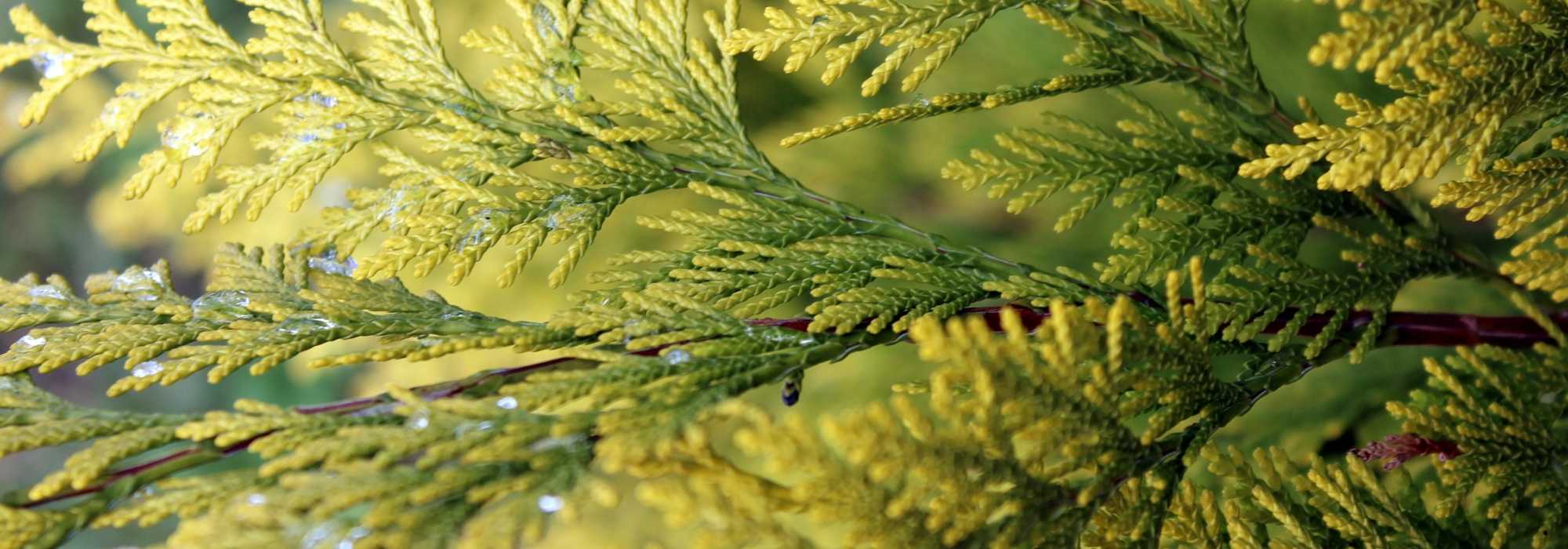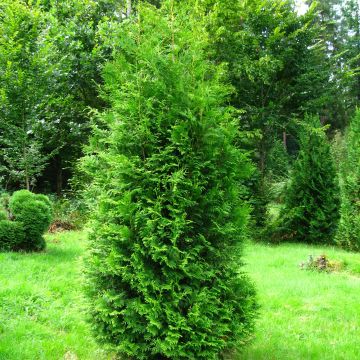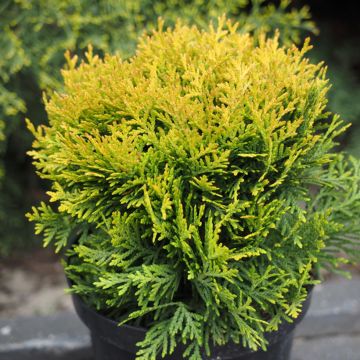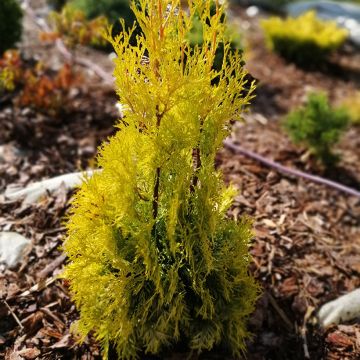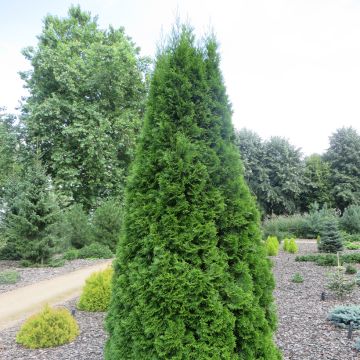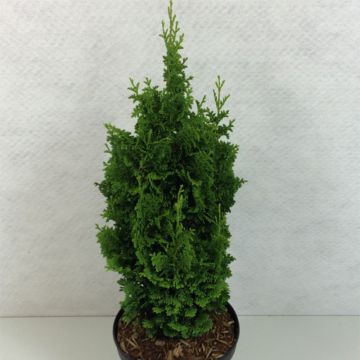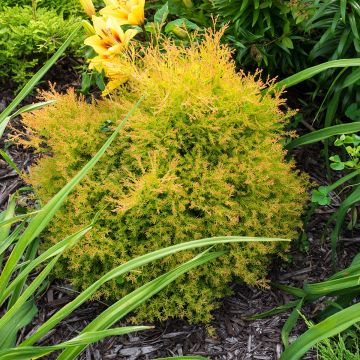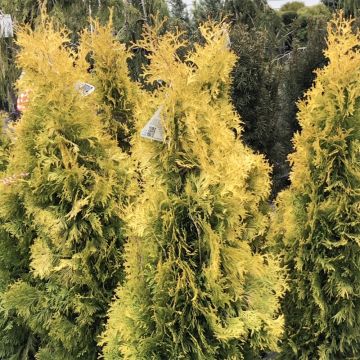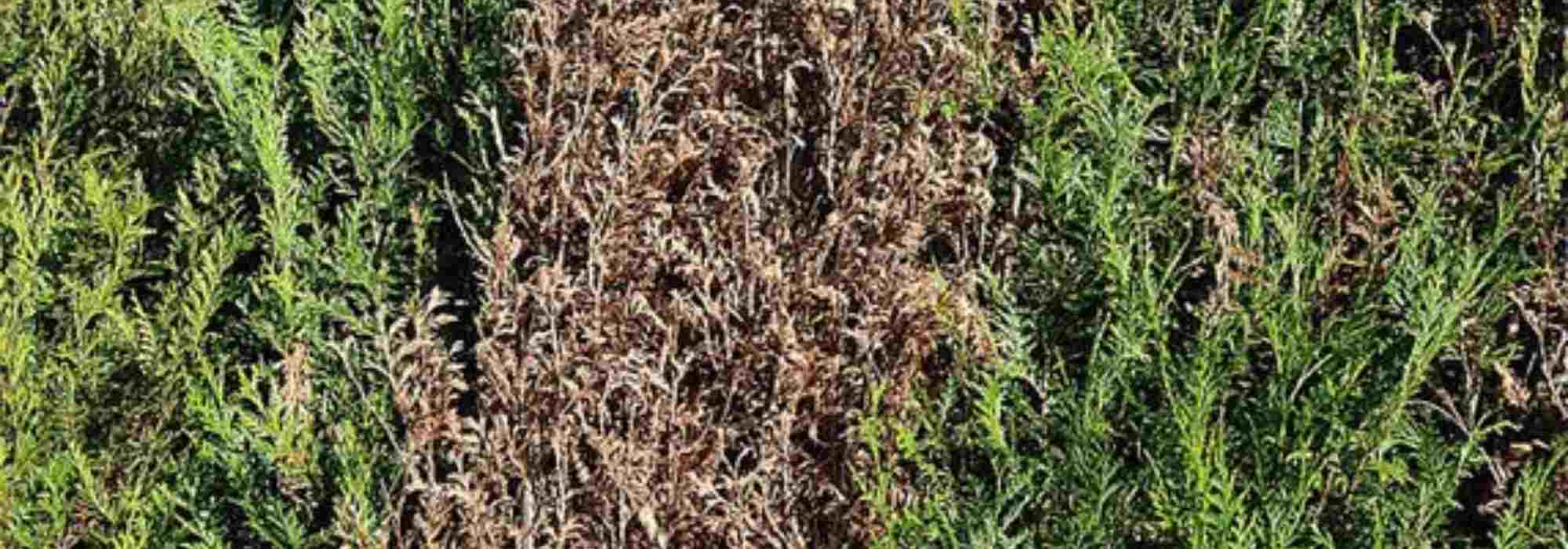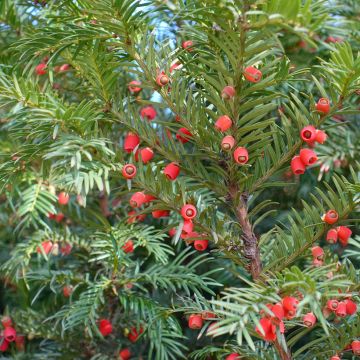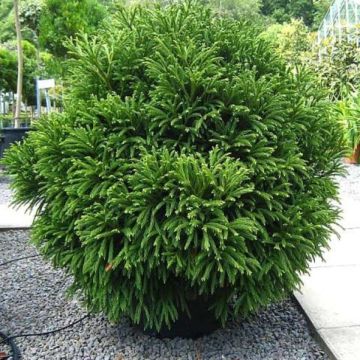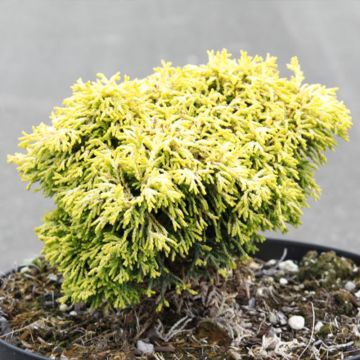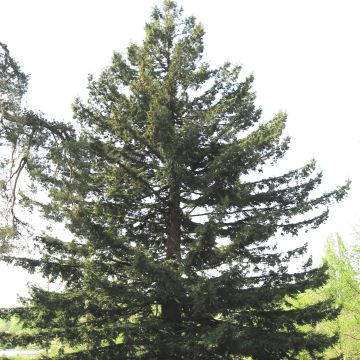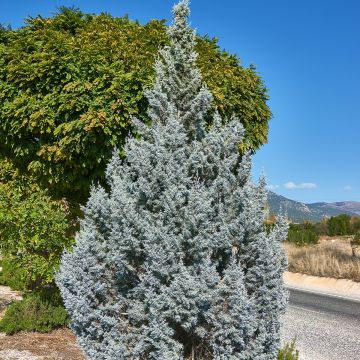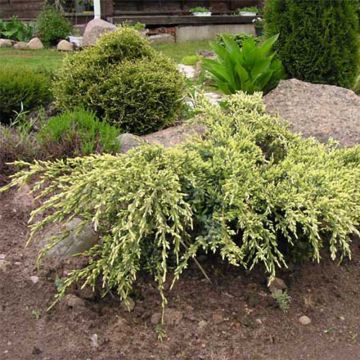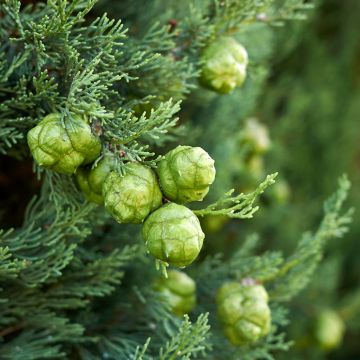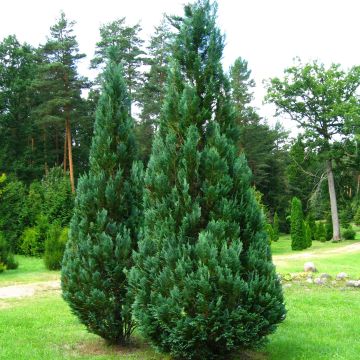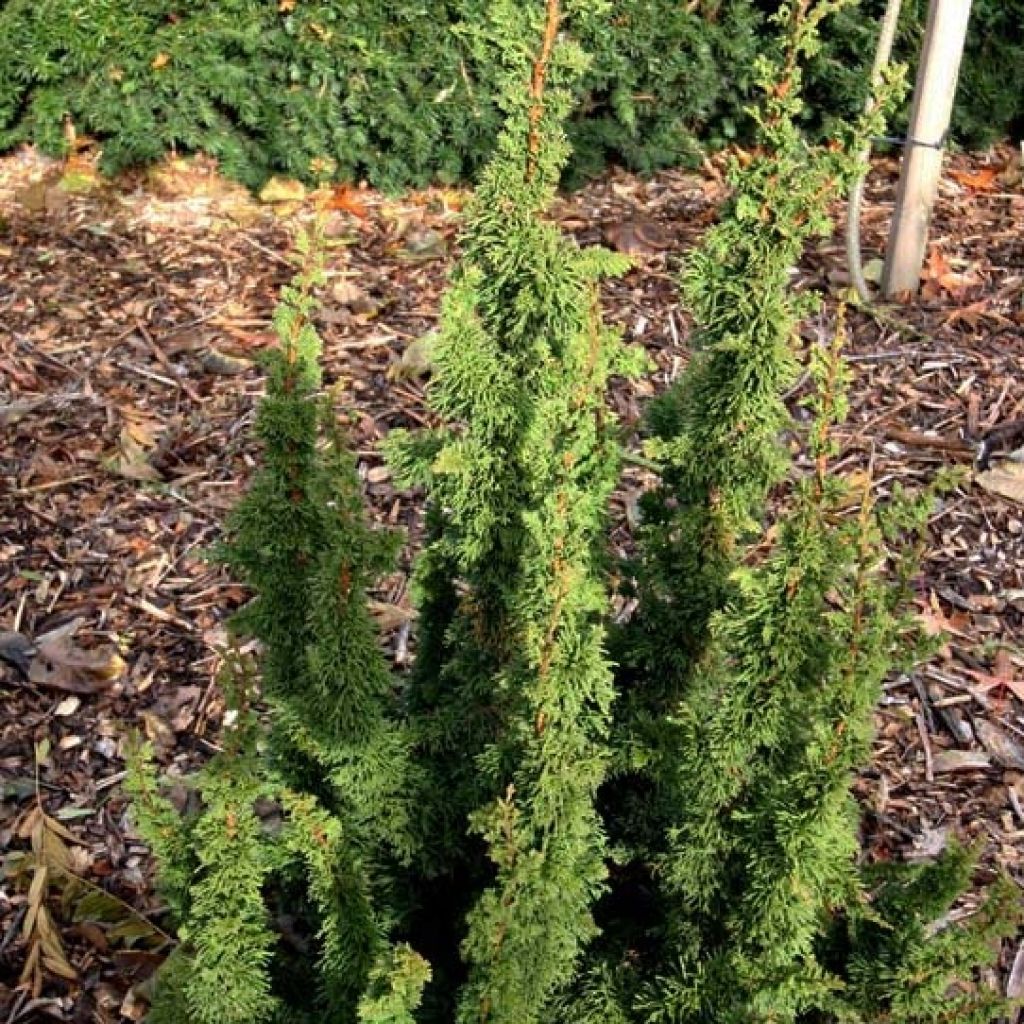

Thuja occidentalis Malonyana Holub - Canadian Arborvitae
Thuja occidentalis Malonyana Holub - Canadian Arborvitae
Thuja occidentalis Malonyana Holub
Eastern White Cedar, Northern White Cedar, American Arborvitae, Eastern Arborvitae
Special offer!
Receive a €20 voucher for any order over €90 (excluding delivery costs, credit notes, and plastic-free options)!
1- Add your favorite plants to your cart.
2- Once you have reached €90, confirm your order (you can even choose the delivery date!).
3- As soon as your order is shipped, you will receive an email containing your voucher code, valid for 3 months (90 days).
Your voucher is unique and can only be used once, for any order with a minimum value of €20, excluding delivery costs.
Can be combined with other current offers, non-divisible and non-refundable.
Why not try an alternative variety in stock?
View all →This plant carries a 24 months recovery warranty
More information
We guarantee the quality of our plants for a full growing cycle, and will replace at our expense any plant that fails to recover under normal climatic and planting conditions.
Would this plant suit my garden?
Set up your Plantfit profile →
Description
The Thuja occidentalis 'Maloyana Holub' is a dwarf variety of Canadian Thuja of small size with a completely original habit, resembling a candelabra. This dwarf conifer forms several vertical heads of different heights and its slightly twisted branches are a beautiful vibrant green. Its very slow growth and limited size make it a perfect subject for rock gardens, and it can even be grown in containers. Native to central Europe, it is extremely hardy and adapts to most soils. It is a low-maintenance plant that does not require pruning and only needs a little water in summer.
The Thuja occidentalis, the Canadian Thuja or Western Thuja, is sometimes called the White Cedar of Canada or Balai. It is an evergreen conifer of the Cupressaceae family native to northeastern North America. It is distributed over a wide geographic area that perfectly reflects the plasticity of its living conditions. In nature, it reaches a height of 15 to 20 m (49 to 66ft), adopting a beautiful conical habit and a trunk covered with a highly decorative bark. It is a perfectly hardy species, very well adapted to temperate climates and poor, wet, or occasionally dry soils. Its almost rot-resistant, lightweight, fragrant, and easily flammable wood lends itself to many uses.
The variety 'Maloyana Holub' comes from a selection of seeds made by Radek Holub in the Czech Republic, within the Miniarboretum u Holubů, an amazing park hosting a collection of rare conifers. It is a conifer for enthusiasts of rarity who have patience, as its growth is really very slow, about 2 to 3 cm (1in) per year. It will only reach a height of 50 to 60 cm (20 to 24in) in 10 years, and its adult size is approximately 1.50 m (5ft) tall with a spread of 90 cm (35in) to 1 m. Its appearance is extremely graphic, reminiscent of certain stalagmite formations in caves. It has no main axis, emitting several vertical heads of unequal heights. The branches can be slightly undulating, with almost crisped branchlets, all with a rather endearing tousled appearance. Each plant is thus unique, far from the varieties that form perfect cones as if moulded. The beautiful evergreen foliage of medium green is decorative all year round, and the strange silhouette of this miniature conifer will blend well with rugged rocks in a rock garden or contemporary rocky setting.
Easy to grow, this Thuja is extremely hardy, resistant to temperatures around -34°C (1°F). It adapts to most soils, whether neutral, acidic, or limestone, as long as they are not too dry in summer.
Rarely encountered, the Western Thuja 'Maloyana Holub' will delight true enthusiasts of dwarf conifers. A rock garden will be enriched by its presence, as well as a contemporary garden, as its design is unique and deserves to be highlighted. A slightly isolated planting, in a rocky setting, will be perfect. If you choose to associate it with other plants in a mixed border, be sure to choose slow-growing species to avoid suffocating it. Other dwarf conifers will then be welcome to create an original graphic scene, such as the Pinus mugo Picobello, a truly dwarf Pine that forms a dome of 80 cm (32in) to 1 m. The Pinus strobus Horsford, a miniature Weymouth Pine with feathery foliage, will also be a good companion, as well as the Abies balsamea Piccolo, a compact and bushy Balsam Fir. And to create a contrast in color, nothing beats the steel blue of the Juniperus squamata Blue Star, a dwarf Juniper that forms a flattened ball, quite different from the candelabra of our 'Maloyana Holub' Thuja.
Thuja occidentalis Malonyana Holub - Canadian Arborvitae in pictures
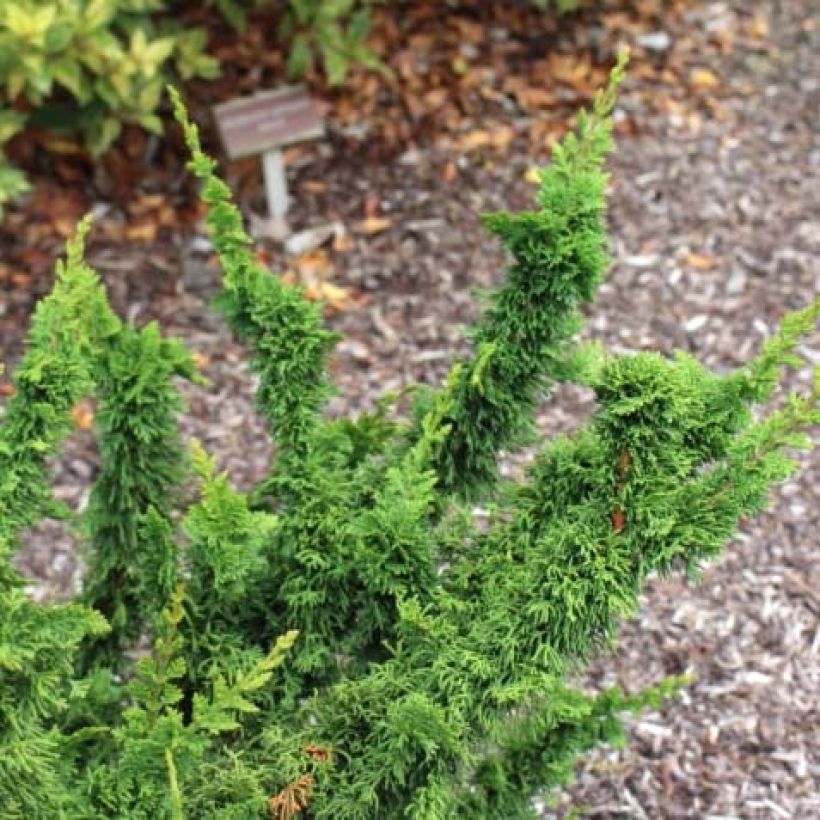



Plant habit
Foliage
Botanical data
Thuja
occidentalis
Malonyana Holub
Cupressaceae
Eastern White Cedar, Northern White Cedar, American Arborvitae, Eastern Arborvitae
Cultivar or hybrid
Other Thuya - Thuja
View all →Planting and care
The Thuja occidentalis 'Malonyana Holub' is planted from September to November and from February to April in deep, ordinary, but loose and not too heavy, acidic, neutral or even slightly calcareous soil, but not too dry in summer. It only fears scorching temperatures and prolonged drought. It is not demanding in terms of exposure, although it prefers a sunny or semi-shaded exposure to develop well. Soak the root ball well in a bucket of water before planting. Optionally, add organic amendment at planting and water generously in the first few years, and in case of prolonged drought. In very poor soil, you can apply special conifer fertilizer every year in April and hoe the soil in summer. This very hardy conifer (down to -34°C (1°F)!) requires no pruning.
Planting period
Intended location
Care
Planting & care advice
This item has not been reviewed yet - be the first to leave a review about it.
Similar products
Haven't found what you were looking for?
Hardiness is the lowest winter temperature a plant can endure without suffering serious damage or even dying. However, hardiness is affected by location (a sheltered area, such as a patio), protection (winter cover) and soil type (hardiness is improved by well-drained soil).

Photo Sharing Terms & Conditions
In order to encourage gardeners to interact and share their experiences, Promesse de fleurs offers various media enabling content to be uploaded onto its Site - in particular via the ‘Photo sharing’ module.
The User agrees to refrain from:
- Posting any content that is illegal, prejudicial, insulting, racist, inciteful to hatred, revisionist, contrary to public decency, that infringes on privacy or on the privacy rights of third parties, in particular the publicity rights of persons and goods, intellectual property rights, or the right to privacy.
- Submitting content on behalf of a third party;
- Impersonate the identity of a third party and/or publish any personal information about a third party;
In general, the User undertakes to refrain from any unethical behaviour.
All Content (in particular text, comments, files, images, photos, videos, creative works, etc.), which may be subject to property or intellectual property rights, image or other private rights, shall remain the property of the User, subject to the limited rights granted by the terms of the licence granted by Promesse de fleurs as stated below. Users are at liberty to publish or not to publish such Content on the Site, notably via the ‘Photo Sharing’ facility, and accept that this Content shall be made public and freely accessible, notably on the Internet.
Users further acknowledge, undertake to have ,and guarantee that they hold all necessary rights and permissions to publish such material on the Site, in particular with regard to the legislation in force pertaining to any privacy, property, intellectual property, image, or contractual rights, or rights of any other nature. By publishing such Content on the Site, Users acknowledge accepting full liability as publishers of the Content within the meaning of the law, and grant Promesse de fleurs, free of charge, an inclusive, worldwide licence for the said Content for the entire duration of its publication, including all reproduction, representation, up/downloading, displaying, performing, transmission, and storage rights.
Users also grant permission for their name to be linked to the Content and accept that this link may not always be made available.
By engaging in posting material, Users consent to their Content becoming automatically accessible on the Internet, in particular on other sites and/or blogs and/or web pages of the Promesse de fleurs site, including in particular social pages and the Promesse de fleurs catalogue.
Users may secure the removal of entrusted content free of charge by issuing a simple request via our contact form.
The flowering period indicated on our website applies to countries and regions located in USDA zone 8 (France, the United Kingdom, Ireland, the Netherlands, etc.)
It will vary according to where you live:
- In zones 9 to 10 (Italy, Spain, Greece, etc.), flowering will occur about 2 to 4 weeks earlier.
- In zones 6 to 7 (Germany, Poland, Slovenia, and lower mountainous regions), flowering will be delayed by 2 to 3 weeks.
- In zone 5 (Central Europe, Scandinavia), blooming will be delayed by 3 to 5 weeks.
In temperate climates, pruning of spring-flowering shrubs (forsythia, spireas, etc.) should be done just after flowering.
Pruning of summer-flowering shrubs (Indian Lilac, Perovskia, etc.) can be done in winter or spring.
In cold regions as well as with frost-sensitive plants, avoid pruning too early when severe frosts may still occur.
The planting period indicated on our website applies to countries and regions located in USDA zone 8 (France, United Kingdom, Ireland, Netherlands).
It will vary according to where you live:
- In Mediterranean zones (Marseille, Madrid, Milan, etc.), autumn and winter are the best planting periods.
- In continental zones (Strasbourg, Munich, Vienna, etc.), delay planting by 2 to 3 weeks in spring and bring it forward by 2 to 4 weeks in autumn.
- In mountainous regions (the Alps, Pyrenees, Carpathians, etc.), it is best to plant in late spring (May-June) or late summer (August-September).
The harvesting period indicated on our website applies to countries and regions in USDA zone 8 (France, England, Ireland, the Netherlands).
In colder areas (Scandinavia, Poland, Austria...) fruit and vegetable harvests are likely to be delayed by 3-4 weeks.
In warmer areas (Italy, Spain, Greece, etc.), harvesting will probably take place earlier, depending on weather conditions.
The sowing periods indicated on our website apply to countries and regions within USDA Zone 8 (France, UK, Ireland, Netherlands).
In colder areas (Scandinavia, Poland, Austria...), delay any outdoor sowing by 3-4 weeks, or sow under glass.
In warmer climes (Italy, Spain, Greece, etc.), bring outdoor sowing forward by a few weeks.






























